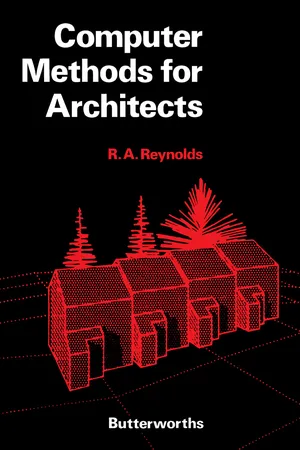
- 160 pages
- English
- PDF
- Available on iOS & Android
Computer Methods for Architects
About this book
Computer Methods for Architects deals with the use of computers in the architecture profession. The text explores where and how computers can and cannot help. The book begins with an explanation of how the majority of the architects around the world were once reluctant to use a computer. It then discusses how some architects improved and advanced the use of computers in the profession. The next part of the book discusses the advantages that a computer can offer an architect, as well as some disadvantages. The next chapter talks about how a computer can handle the files of an entire office. Discussions on the computer's database, proper selection of programs, and simulation techniques are also included in the book. The text finally talks about what the future may hold for computers and architects. This book caters to architects, as it talks about what a person in the field could encounter while using computers.
Frequently asked questions
- Essential is ideal for learners and professionals who enjoy exploring a wide range of subjects. Access the Essential Library with 800,000+ trusted titles and best-sellers across business, personal growth, and the humanities. Includes unlimited reading time and Standard Read Aloud voice.
- Complete: Perfect for advanced learners and researchers needing full, unrestricted access. Unlock 1.4M+ books across hundreds of subjects, including academic and specialized titles. The Complete Plan also includes advanced features like Premium Read Aloud and Research Assistant.
Please note we cannot support devices running on iOS 13 and Android 7 or earlier. Learn more about using the app.
Information
Table of contents
- Front Cover
- Computer Methods for Architects
- Copyright Page
- Table of Contents
- Preface
- Acknowledgements
- Chapter 1. Past and present
- Chapter 2. Using computers
- Chapter 3. Office organisation
- Chapter 4. Choosing programs
- Chapter 5. Using databases
- Chapter 6. Computer-aided draughting
- Chapter 7. Visualisation
- Chapter 8. Job management
- Chapter 9. Simulation techniques
- Chapter 10. Environmental analysis
- Chapter 11. Miscellaneous applications
- Chapter 12. The future
- Chapter 13. Sources of information
- Glossary
- Bibliography
- Index